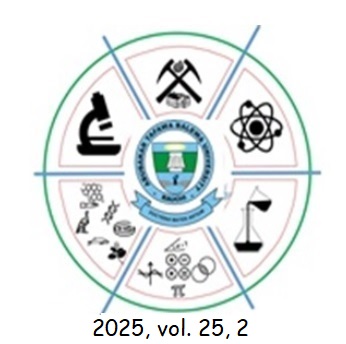Hydrochemical Characteristics and Quality Assessment of Surface and Groundwater Resources Around Nasarawa-Eggon Coal Mining Site Northcentral Nigeria Using Multivariate Statistical Analysis
Keywords:
Hydrochemistry, Water quality, Multivariate Statistics, Coal mining, Nasarawa-EggonAbstract
Access to clean and safe potable water is vital for the well-being of communities in
Nasarawa-Eggon, located in northcentral Nigeria. However, water resources in the
area face quality degradation due to acidic discharges from abandoned coal mines
and other anthropogenic activities. This study investigates the hydrochemical
characteristics and quality of surface and groundwater around the Nasarawa-Eggon
coal mining site, with the aim of evaluating their suitability for drinking and irrigation
purposes using multivariate statistical techniques. A total of seventeen water
samples were collected from ponds, streams, and boreholes and analyzed for key
water quality indicator parameters. Hydrochemical facies were identified using Piper
and Gibbs diagrams, revealing dominant water types including CaCl, Mixed CaMgCl,
and HCO₃ types. The Gibbs plot indicated that rock weathering and mineral
dissolution are the primary geochemical processes influencing water chemistry in the
area. To assess relationships among water quality parameters and their potential
sources, multivariate statistical methods such as Pearson correlation and hierarchical
cluster analysis were employed. Water quality indices (WQI) for both drinking and
irrigation were computed using standard evaluation models. Results from the
Canadian Council of Ministers of the Environment Water Quality Index (CCME-WQI)
classified the drinking water quality as good, with groundwater exhibiting the highest
quality. For irrigation suitability, the Sodium Adsorption Ratio (SAR) indicated that
58.8% of the samples are of excellent quality, while 41.2% are good. Overall, the
study underscores the impact of both natural processes and coal mining activities on
the hydrochemical evolution of water in the area. It also demonstrates the utility of
multivariate statistical techniques as effective tools for evaluating water quality and
tracing pollution sources in mining-impacted environments.
Downloads
Downloads
Published
Issue
Section
License
Copyright (c) 2025 Journal of Pure and Applied Sciences (Science Forum)

This work is licensed under a Creative Commons Attribution-NonCommercial-ShareAlike 4.0 International License.




